It wasn’t until seeing a very small portrait by Hans Holbein the Younger, that I really began paying attention. It completely stopped me in my tracks, as it provided such a rich visual experience.
In that portrait of his (shown below), the softness of the fabric in the painting can almost be felt… In addition, the colors harmonize in such a delightful way − that the exquisite skill and technique displayed is unparalleled. Hans Holbein created art of dazzling beauty and intricacy.
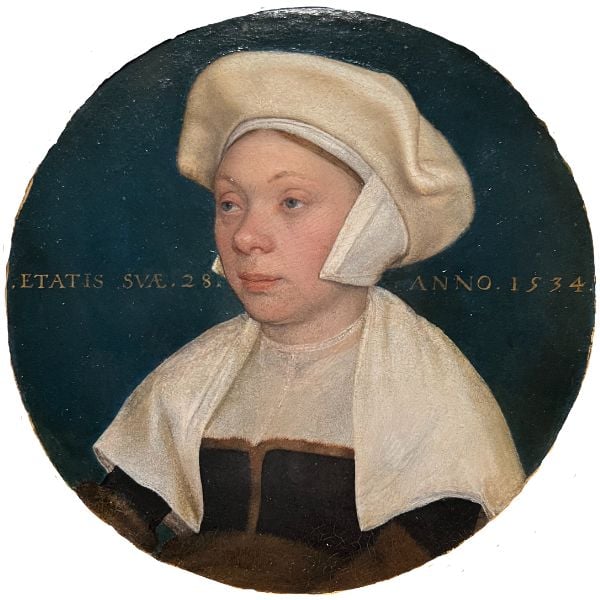
In this article we will delve into several of Holbein’s paintings and drawings. So that we can really breakdown the techniques he was using… Let’s get started!
Hans Holbein paintings capture the real
As a young painter, Holbein moved to Basel from his native Bavaria where he found nearly instantaneous success. One of Holbein’s early works ‘The Body of the Dead Christ in the Tomb’ is proof of his early talent. As well as his focus on what is real and capturing specific detail.

The Russian writer, Dostoyevsky, was famously captivated by this work precisely because it depicted the stark reality of death in such a real way. We will see this steely attention and focus on specificity throughout his life’s work.
Holbein painting techniques
Fortunately, I was able to see a show of Holbein’s paintings and drawings at the Morgan Library in NYC! Seeing his work in person is a very different experience to viewing reproduced images of his work online… What really stood out about his paintings and drawings, was how exacting and strong it was. While at the same time profoundly sensitive and delicate.
That astonishing level of technique, is the vehicle behind the great beauty we see in Hans Holbein’s paintings.
Sfumato Technique
Hans Holbein absorbed and studied the works of other painters. Creating innovative work by applying what he learned in a fresh new way.
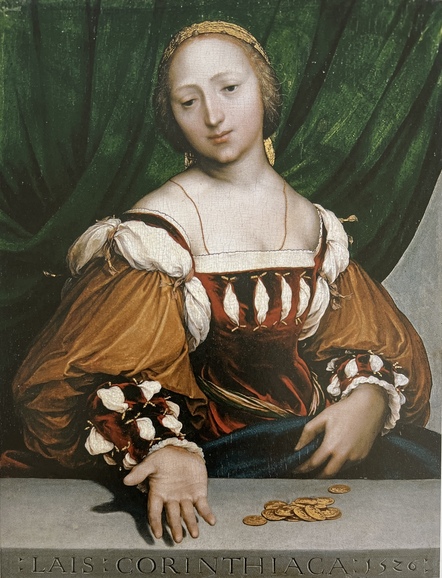
The painting Laïs Corinthiaca above, reflects his exposure to Leonardo da Vinci because of the soft modeling (sfumato) in the painting – particularly on the flesh.
The sfumato technique can be described as “soft edges” where you see very subtle transitions between colors.
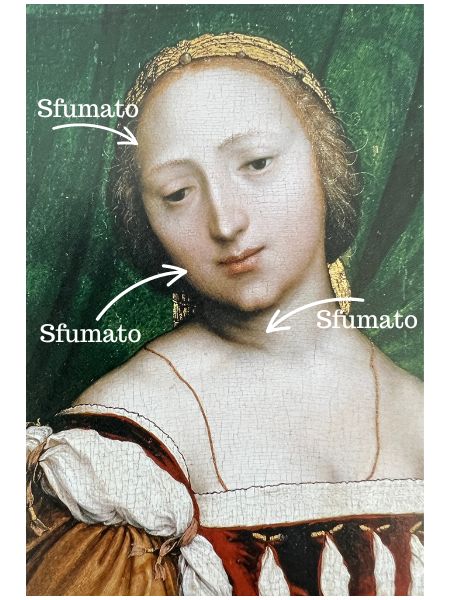
Hans Holbein was a northern Renaissance painter. It is clear though that he absorbed influence from the Italian Renaissance as well.
Layering and Glazing Colors
To create the vibrant colors in his paintings, Holbein would often employ a glazing technique where he would paint a thin layer of color over a dry layer of paint. This gives the colors in his paintings depth and dimension that helps create a gem-like quality that is truly unique.
By layering and glazing colors Holbein was able to capture mesmerizing colors. In the portrait of Jane Seymour below, we see this layering technique on full display. Making is so that the colors seem to shine and vibrate and have a luminous quality.
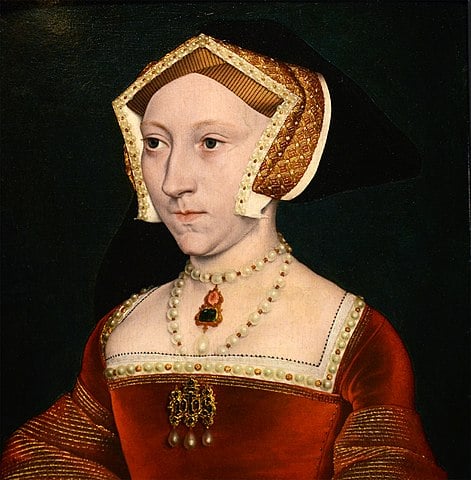
Take for example the red dress Jane Seymour is wearing in the image above. The dark red color on the dress makes you feel the depth of the color and its multidimensional quality. This is the kind of development that glazing can have on a painting.
Hans Holbein’s drawing techniques
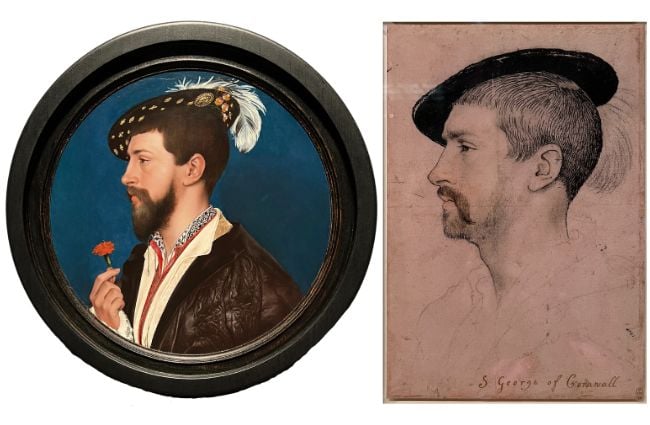
I was not prepared to be completely blown away by the drawings at the Hans Holbein show. They convey an extraordinary sensitivity to line and I like them just as much as his paintings if not more. He has an incredible level of precision in his drawings. Something that makes a lot of sense when you realize that he used his drawings a lot for reference when creating his paintings.
Holbein’s early drawing technique
Like many old master artists, we do not have a paper trail documenting Holbein’s early training. So we don’t know exactly what the development of his technique looked like.

However, we do have drawings done shortly after he finished his training in his father’s workshop. These early Hans Holbein drawings are all done in silverpoint and have beautiful tonal and line variations.
So, even though they are line drawings, they have a sense of light as well as sense of depth. The dark thicker lines push forward while the lighter lines move further back in space.
Drawing with colored chalk
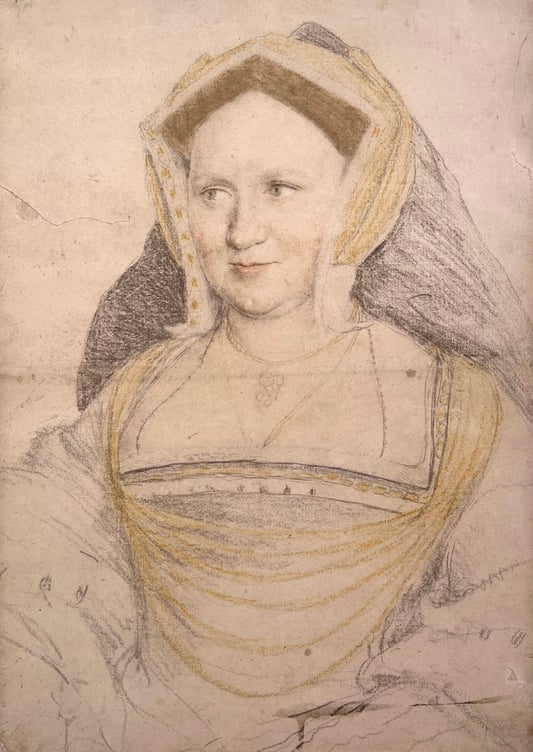
Later on in his career, Holbein also started to incorporate colored chalks. Since he relied on using his drawings as a reference for his paintings. This would help him produce successful painted likenesses. With a broader range of materials, he could capture additional information to include in his paintings. Colored chalks offered artists an efficient way of capturing their subject’s appearance.
Drawing on colored ground
Holbein continued to experiment with different ways of using his drawing materials. By 1648 he started to use paper primed with a pink-colored ground.

This pink color must have appealed to him as it approximated the skin tone of his English sitters. Providing him with a warm-hued middle tone upon which lighter and darker colors could be added. This expanded his ability to model and more precisely depict a sitter’s particular complexion.
Attending to details
Holbein’s powers of observation are clear even with a casual glance at his work. The level of precision and detail the artist goes into is rarely matched in European portrait drawings of the early 16th century. It is precisely this level of exactitude that makes his sitters have a sense of individuality and animation.

In the drawing of Sir Richard Southwell, we see the irregularly shaped scars present on both his neck and forehead. Holbein isn’t trying to create an idealized portrait but captures what is real.
Learn more from Hans Holbein
Both Hans Holbein’s paintings and drawings, clearly demonstrate a high level of skill and mastery. Attainable only through years of practice and observation.
I encourage you to study his techniques further and learn from his sharp observational skills. You can even do a master copy study of his work to deepen your understanding of how he painted.
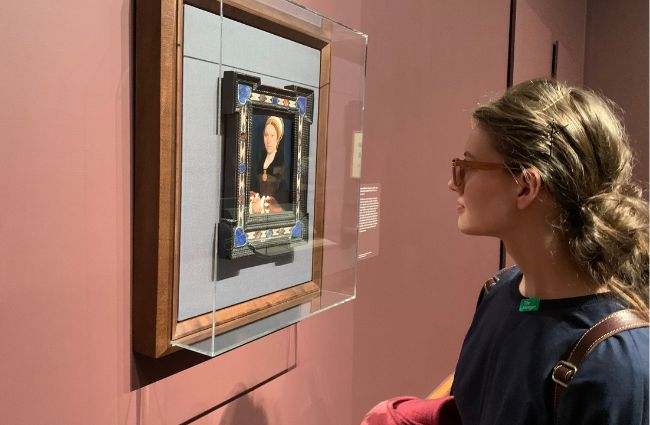
Even though the exhibit I attended “Holbein: Capturing Character” is no longer on view. You can get a free virtual 3d view of the exhibit via the Morgan Library website! You can even click the ‘listen’ button when viewing a piece to hear a narrator tell you more about each work! Let me know what you think about Hans Holbein the Younger’s work below in the comment section. I would love to hear from you!
In addition, the following book of Holbein’s paintings and drawings was published to accompany the exhibition at the Morgan Library. It is still available to purchase, if you’d like more in-depth information about Hans Holbein the Younger and his work!







12 thoughts on “Important Hans Holbein (Paintings and Drawings) Techniques”
Salut Elisabeth.
The painting of the dead Christ in the vault is realistic and well executed. Modern Medicine has questioned where the nails were driven into the hands of Jesus. The entire weight of the body pulls down causing the palm of the hand to tear. Either there was a rope around the arms to prevent the pulling, or the nails had been driven into the wrist. But Holbein was unaware of the 20th century experiments by renowned pathologists on cadavers.
The last comment is my surprise to see portraits of British nobility executed by a German painter. However Holbein stayed twice in England and the last stay was 11 years at the time of King Henry VIII. He died in England.
Hi Paul, Thank you for sharing your comments and thoughts on Holbein. It is indeed interesting that a German painter painted portraits of British nobility. In his time, he was a far more skilled portraitist than most British artists – which landed him the job!
Again, so detailed, thorough and thoughtful. Thanks Elizabeth.
Hi Neil, You are very welcome! I am glad that you enjoyed this article.
I found Holbein very interesting. Thanks for unveiling his genius to me.
Hi Kathy, So glad that you enjoyed learning about Hans Holbein and his work!
The paintings of Hans Holbein show the “real” not the “ideal” even being a very influenced age from the church.
We could say tthat the Artist works as being in the “Realism” age that only appears in the meddle of the XIX century.
Yet the sfumato technique and the use of soft edges put this Artist as a Renaissance painter
Hi Helena, Wonderful observations. Yes, it is true that he was ahead of his time in terms of working like a realist, and at the same time he was a true Renaissance painter. He definitely shows much more of the ‘real’ and not the ‘ideal’ which makes him so interesting.
Thanks for sharing this Elisabeth. While I’ve never been overly drawn to Holbein’s work, from a purely aesthetic standpoint, I have always admired his technical virtuosity – especially in his portraits (I think the Henry VIII portrait has been included in every art history class/video/book I’ve studied). Thank you for making me aware of more of the breadth of his work, which I now view with newfound admiration!
Hi Dorian, Good to hear from you! Am very glad that you enjoyed this article. I had the exact same experience as you as I was never overly drawn to his work at first… He does have such extraordinary breadth in his work and personally look forward to exploring more of it. Very glad that you have found the same and are looking at it with newfound admiration.
אליזבת יקרה
הצגת פה טכניקות מענינות שיוצרות ציורים מיוחדים ואופי עדין
מאוד מיוחד וחדש לי,תודה רבה
נפלא
בהערכה
רותי כהן
רותי היקרה, אני כל כך שמחה לשמוע שנהנית מהמאמר הזה! תודה על השיתוף. אם אתה רוצה לראות עוד בדוק את התערוכה הוירטואלית של הציורים שלו – זה בחינם. איחולים חמים, אליזבת